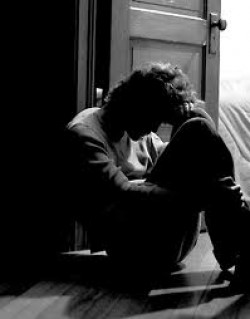5 Common Symptoms of Schizoaffective Disorder
What is Schizoaffective Disorder?
According to the National Alliance on Mental Illness, schizoaffective disorder is a mental illness that affects nearly one in every 100 people. Schizoaffective disorder has features that resemble both a mood disorder and schizophrenia. Some of the same treatment is used to treat schizophrenia that is used to treat schizoaffective disorder.
Schizoaffective disorder may cause a person to have hallucinations, while distorting their sense of reality, and it can cause a person to have major depression, or manic episodes followed by major depression, which are the symptoms of bipolar disorder. Schizoaffective disorder can cause a person to act in ways they never did before, and can cause a person to shun themselves from society. However, there is treatment for the disorder that can help a person manage the symptoms of it.
Common treatment for Schizoaffective disorder includes, mood stabilizing medications, antipsychotic medications, psychotherapy, family involvement, peer support, and integrated care.
Five Common Symptoms of Schizoaffective Disorder

Living with schizoaffective disorder can be tough. The condition involves bouts of depression, hallucinations, paranoia and more.
Schizoaffective disorder is commonly a mixture of bipolar disorder and schizophrenia, because it typically has characteristics of both disorders.
According to the National Alliance on Mental Health, an individual who has schizoaffective disorder will have significant disturbances in their mood, which are the ‘affective’ symptoms of the disorder. In the absence of mood disturbances, people with schizoaffective disorder will have psychotic symptoms, and then have symptoms of bipolar disorder or depression.
Five common symptoms for schizoaffective disorder, that every person should seek out help for if they experience, include…
1. Sudden onsets of depression: If a person is feeling depressed for weeks or months at a time, and the feelings of depression occur suddenly with no known cause, the person should be seen by a mental health professional.
2. Hallucinations: People who have schizophrenia commonly see things that are not real, and with schizoaffective disorder, a person may have hallucinations as well.
3. Paranoia: If a person is seeing and hearing things that are not real, they may experience extreme paranoia where they are constantly on edge, and nervous.
4. Rapid mood swings: A person with schizoaffective disorder will have rapid mood swings due to the effects of both schizophrenia and a mood disorder, such as bipolar. Some people may become violent when they have these rapid mood swings.
5. Manic episodes: If a person has bipolar disorder they will have episodes of depression that last a while, as well as manic episodes. Bipolar is the most common mood disorder linked with schizoaffective disorder. During a manic episode, a person will not sleep much and they will have bursts of energy and constantly feel the need to engage in activities. This can last for days, weeks, or months at a time.





